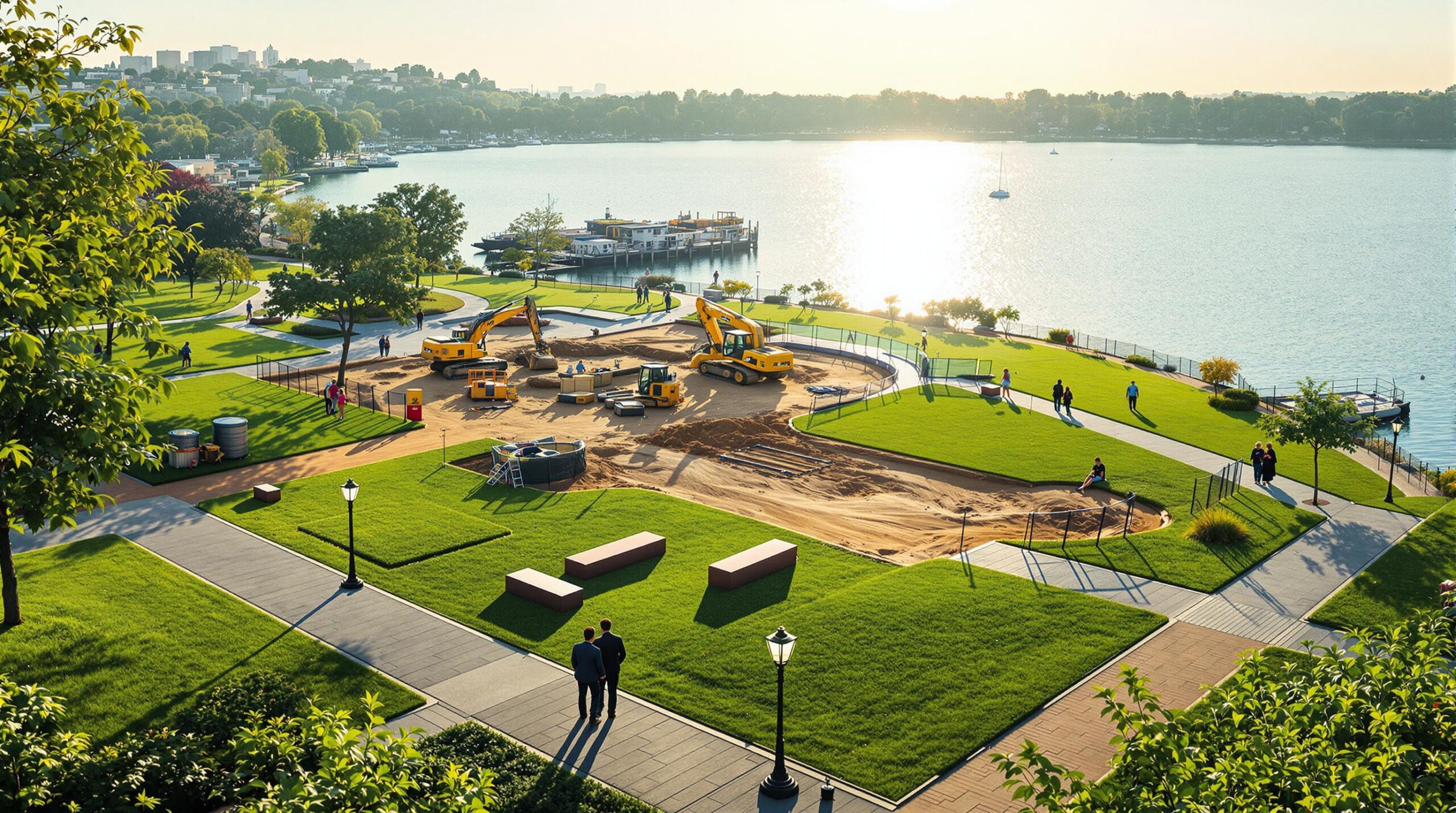Construction crews have been making steady progress on a $47.5 million revitalization of Buffalo Harbor State Park, billed as a significant upgrade to its existing waterfront amenities. The plan aims to introduce a new interactive spray park, enhance walking paths, and expand visitor services such as a café and retail areas. Specific improvements outlined in a recent overview indicate a focus on turning the park into a premier destination along Lake Erie.
Acting Commissioner of New York State Parks, Randy Simons, has cited a strong need for the expanded features. “This is a very specialized construction project, and it’s much needed,” he said. He also explained that a large, ground-level spray area will serve as the primary recreational centerpiece: “The centerpiece of the upgrades will be a massive interactive water feature that will make this a destination spray area.”
Project details show that a phased approach will keep most areas accessible until the latter stages of development. Temporary restrooms have been brought in while work proceeds on a new park office. Officials have stated that full completion is expected by Memorial Day 2026, giving local families and summer visitors a clear timeline for the impending improvements.
Local visitor Christiann McCabe praised Buffalo Harbor State Park’s existing attributes during a recent visit. “We come here because it’s got beautiful scenery,” she said. “There’s tons of paths that you can walk on and go explore.” She also believes the renovations will further underscore its appeal. “It’s already pretty family-oriented, but now that they are bringing in more family-oriented activities, I feel like it will draw more people towards this park,” she noted.
Additional planned amenities include a café for refreshments, scenic retail spaces, and updated restrooms within a modern park office. Newly designed walkways promise to take advantage of the waterfront vistas, ensuring Lake Erie’s expansive views remain a central draw for both locals and tourists. Throughout construction, project managers anticipate minimal disruptions outside the immediate work zones.
Many outdoor hospitality professionals agree that including dedicated amenities for RVs and campers broadens a park’s appeal. Designated RV parking areas with straightforward pull-through access, ample utility hookups, and clear signage can improve overall traffic flow while creating a welcoming atmosphere for first-time visitors. A simple reservation system that factors in vehicle lengths and group sizes helps reduce congestion and wait times. Basic best practices are also relevant, such as well-lit walkways, strategic placement of trash and recycling receptacles, and easy-to-access wash-down stations. While the renovation at Buffalo Harbor State Park centers around the upcoming spray park, café, and improved walkways, introducing or expanding these camping features could position the park as a more versatile, year-round destination. This approach mirrors wider trends in outdoor hospitality by combining family-friendly entertainment with robust, well-equipped overnight accommodations.
Eco-conscious landscaping methods help preserve natural settings for outdoor hospitality venues and create a safer, more pleasant environment for guests. Incorporating native plant species reduces water and maintenance needs, and intelligent irrigation systems can further optimize resource usage. Selecting durable, weather-resistant construction materials for walkways and recreational zones can minimize long-term ecological impact.
Evidence of significant conservation gains has surfaced in another case where turf replacement initiatives with drought-resistant native plants resulted in dramatic water savings. Replacing nonfunctional grass at the University of Northern Colorado reduced annual irrigation from about 3 million gallons to about 1 million gallons, as described in another instance of proactive outdoor sustainability.
Buffalo Harbor State Park’s renovation already aims to protect the local waterfront, and weaving in green measures aligns with that philosophy. Regular environmental assessments, taking into account soil conditions and wildlife habitats, can ensure that future visitors enjoy both improved amenities and a well-preserved shoreline. By incorporating strategies that minimize water use and encourage natural land cover, the project may appeal to families seeking eco-friendly recreation.
Renovations remain on track to offer minimal disruption to visitors for most of the construction window, with officials expecting heavier activity in the final phases. Area residents have shown support for the upcoming features, citing expectations of an uptick in recreational opportunities that complement the park’s existing charm. Parks staff remain optimistic about connecting modern amenities with the area’s scenic backdrop in ways that enhance its overall allure.
According to project leaders, momentum generated by the interactive spray area and newly built facilities may boost regional tourism and inspire more families to explore the Lake Erie shoreline. Once complete, Buffalo Harbor State Park might stand as a demonstration of how large-scale waterfront development, forward-thinking camping features, and eco-friendly landscaping can intersect to create a vibrant communal space. With Memorial Day 2026 identified as the finish line, many eyes will be watching to see how this transformation takes shape.


